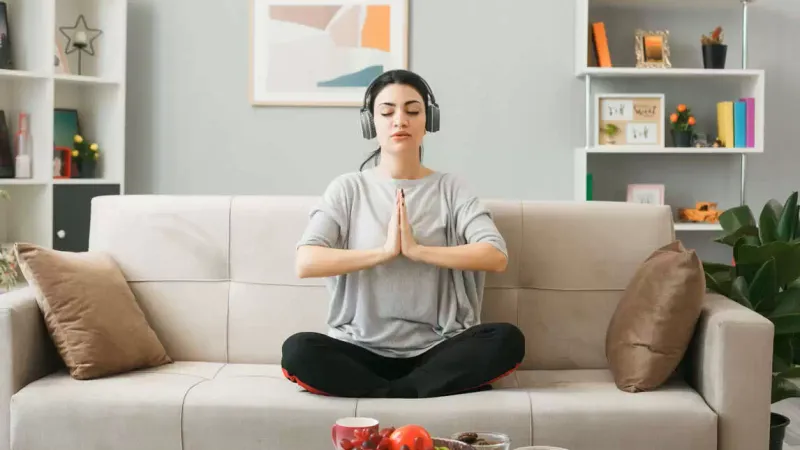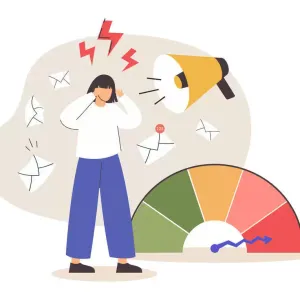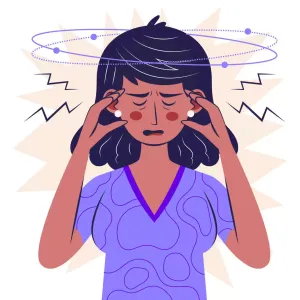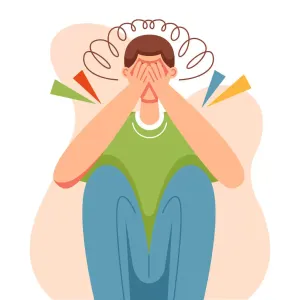

Our Review Process
Our articles undergo extensive medical review by board-certified practitioners to confirm that all factual inferences with respect to medical conditions, symptoms, treatments, and protocols are legitimate, canonical, and adhere to current guidelines and the latest discoveries. Read more.
Our Editorial Team
Shifa Fatima, MSc.
Author
Dr. Apoorva T, MHM.
MEDICAL ADVISOR
Meditation for high blood pressure
Meditation is a mental practice in which a person adopts a method, such as mindfulness or focusing their mind on a specific object, idea, or activity, to train attention and awareness and reach a cognitively clear, emotionally peaceful, and stable state.
Meditation has been practiced for thousands of years in various countries and traditions as a technique for increasing physical and mental well-being, and its potential health benefits have been researched scientifically.
There are several varieties of meditation, each with its own set of qualities and procedures, but they all share the common objective of assisting individuals in achieving a state of relaxation and mental clarity.
Anyone, regardless of age, religion, or cultural background, can practice meditation. It can be done sitting, laying down, standing, or walking, for as little as a few minutes or for a lengthy amount of time. Some individuals meditate as part of their daily habit, while others meditate only sometimes to relieve stress or discover inner peace and serenity.
Meditation's health advantages are being supported by a growing amount of scientific research. Meditation has been found in studies to reduce stress and anxiety, enhance sleep, lower blood pressure, and boost emotions of well-being and happiness.
It has also been proven to boost concentration and focus, as well as to alleviate sadness and bad emotions. Meditation may also offer physical health advantages, such as lowering inflammation, enhancing cardiovascular health, and strengthening the immune system, according to some studies.
Overall, meditation is a powerful technique that may assist people in finding inner peace, reducing stress, and improving their physical and mental well-being. Meditation, whether done often or infrequently, may be a significant addition to anyone's life.
Table of Contents
What does a blood pressure-lowering meditation mean?
Blood pressure-lowering meditation is a type of meditation that is particularly meant to help people with hypertension or high blood pressure, to help drop their BP. High blood pressure is a frequent health problem characterized by an excessive force of blood on the arterial walls. This can result in several health issues, including heart disease, stroke, and renal disease.
Deep breathing, visualization, and mindfulness are all strategies used in blood pressure-lowering meditation to help people relax and drop their blood pressure to a healthy level. These approaches are thought to help reduce stress, which is a key factor in high blood pressure. Individuals can lower their blood pressure and risk of acquiring hypertension-related health issues by lowering stress.
Individuals can employ a range of various blood pressure-lowering meditation practices, including:
1) Deep breathing
Deep breathing requires inhaling slowly and deeply via the nose and expelling through the mouth for 10 minutes or until you feel relaxed and less stressed. This can aid in the relaxation of the neurological system and the reduction of blood pressure.
2) Visualization
Visualization involves imagining a tranquil or relaxing environment and focusing on that image to relax.
3) Mindfulness
Mindfulness includes paying attention to the current moment and being aware of one's thoughts and experiences without passing judgment. This can aid in stress reduction and blood pressure reduction.
Mindful exercise activities like yoga and Pilates boost your health by improving your heart rate, breathing rate, and many other bodily functions. Mindfulness can also aid in healthy eating and the management of one's eating habits.
4) Progressive muscle relaxation
To assist alleviate tension and stress, progressive muscle relaxation includes tensing and relaxing certain muscle groups in the body.
Blood pressure-lowering meditation is not a replacement for medical treatment for hypertension. Incorporating blood pressure-lowering meditation practices into one's lifestyle, on the other hand, can be a valuable supplement to medical therapy, helping to reduce blood pressure and enhance general health.
How does meditation reduce blood pressure?
Meditation is a practice that involves focusing the mind on a particular object, thought, or activity to train attention and awareness, and achieve a mentally clear and emotionally calm, and stable state. It has been used for centuries as a means of reducing stress and promoting overall health and well-being.
There is evidence to suggest that meditation may help to reduce blood pressure by relaxing the body and reducing stress. Stress and tension can cause the blood vessels to constrict, which can lead to an increase in blood pressure. When you meditate, you can clear your mind and relax your body, which can help to lower blood pressure and reduce the risk of health problems such as heart disease and stroke.
In addition to the relaxation response, meditation may also help to improve sleep and reduce anxiety. Poor sleep quality and high levels of anxiety have been linked to higher blood pressure, so improving these factors can also contribute to better overall health and lower blood pressure.
Meditation may also have a positive effect on the nervous system, which plays a role in regulating blood pressure. The sympathetic nervous system activates the "fight or flight" response, which can increase heart rate and blood pressure.
The parasympathetic nervous system, on the other hand, promotes the "rest and digest" response, which can help to lower blood pressure. Meditation may activate the parasympathetic nervous system, helping to promote a state of relaxation and lower blood pressure. While meditation may be beneficial for blood pressure, it should not be used as a replacement for prescribed medications or other medical treatments.
How to Meditate If Your Blood Pressure Is High
Meditation is a mental practice that involves focusing your attention on a specific object, thought, or activity to train your attention and awareness. It has been shown to have a number of potential health benefits, including reducing stress and anxiety, improving sleep, and lowering blood pressure. If you have high blood pressure, meditation may be a useful tool to help you manage your condition.

Steps to follow
1. Find a quiet, comfortable place:
Choose a place where you can sit or lie down without being disturbed.
2. Focus on your breath:
Take a few slow, deep breaths and focus on the sensation of the breath moving in and out of your body. You can close your eyes or keep them open, whichever feels more comfortable for you.
3. Redirect your attention:
When you notice that your mind has wandered, gently redirect your attention back to your breath.
4. Use a mantra or visualization: If you find it difficult to focus on your breath, you can try using a mantra or visualization to help keep your mind focused. A mantra is a word or phrase that you repeat to yourself, either silently or out loud. Some people find it helpful to visualize a peaceful scene or image.
Tips
- Be patient with yourself: It's common to feel frustrated or restless at first, especially if you're not used to sitting still or focusing your attention. Don't worry if you can't sit still for very long at first – just do what you can and gradually increase the length of your practice as you become more comfortable.
- Consult with your healthcare provider: Meditation is generally considered safe, but it's always a good idea to consult with your healthcare provider if you have any concerns.
How long should you meditate to lower blood pressure?
Regular meditation can help to lower blood pressure. However, the amount of time that you need to meditate to see a decrease in blood pressure can vary depending on a variety of factors, including your starting blood pressure, age, and overall health.
In general, it is recommended to practice meditation for at least 10-20 minutes per day to see a potential benefit for blood pressure. It is important to note that meditation should not be used as a replacement for medical treatment for high blood pressure.
Can daily yoga practice for 15 minutes lower blood pressure?
In one study, people with high blood pressure who practiced yoga for at least 30 minutes per day, 5 days per week, saw a significant decrease in their blood pressure after just 8 weeks. While this study suggests that a daily yoga practice of at least 30 minutes may be effective in lowering blood pressure, a shorter daily practice of 15 minutes may also be helpful.
However, the amount of time needed to see a decrease in blood pressure may vary depending on a variety of factors, including your starting blood pressure, age, and overall health.
Yoga's effects on blood pressure
Practicing yoga may help to lower blood pressure in some individuals. Yoga is a type of physical and mental exercise that originated in ancient India. It involves a series of physical postures, breathing techniques, and meditation practices.
One small study published in the Journal of Alternative and Complementary Medicine found that a 12-week yoga program was associated with a significant reduction in systolic blood pressure (the top number in a blood pressure reading) in people with hypertension.
Another small study published in the Journal of Human Hypertension found that regular yoga practice was associated with a reduction in both systolic and diastolic blood pressure (the bottom number in a blood pressure reading) in people with hypertension.
Bottomline
Numerous studies have shown that regularly practicing meditation techniques, such as mindfulness meditation, can lead to a reduction in blood pressure levels. These techniques work by helping individuals to relax, reduce stress and anxiety, and improve overall well-being.
Additionally, some research suggests that meditation may help to improve heart health and increase blood flow, both of which may contribute to better blood pressure control.
While more research is needed to fully understand the relationship between meditation and blood pressure, it is clear that meditation can be a useful addition to a healthy lifestyle for individuals looking to manage their blood pressure levels.
FAQ
1. Can breathing deeply lower blood pressure?
Deep breathing can help relax the body and reduce tension, both of which can lower blood pressure. When you are worried, your body enters "fight or flight" mode, causing your blood pressure to increase.
Taking calm, deep breaths might help you relax and return your blood pressure to normal. Other relaxation practices, such as meditation and yoga, can help reduce blood pressure in addition to deep breathing.
2. What is the best time to exercise to lower blood pressure?
It is generally recommended to engage in physical activity at a time that is convenient and works best for you, as this can help increase the chances that you will stick with the activity in the long term. However, some research suggests that certain times of day may be better for reducing blood pressure.
For example, some studies have found that exercising in the morning may be particularly effective at lowering blood pressure. This may be because the blood pressure-lowering effects of exercise tend to be more pronounced in the morning when blood pressure is naturally at its highest.
Additionally, exercising in the morning may help improve sleep quality and reduce stress, both of which can also contribute to lower blood pressure. Ultimately, the best time to exercise to lower blood pressure is likely to be the time that works best for you and that you can consistently stick with.
3. How much exercise is good for high blood pressure?
The American Heart Association recommends at least 150 minutes of moderate-intensity or 75 minutes of vigorous-intensity aerobic physical activity per week for adults, or a combination of moderate- and vigorous-intensity activity. This equates to about 30 minutes of moderate-intensity activity 5 days per week, or 25 minutes of vigorous-intensity activity 3 days per week. In addition to aerobic activity, also include muscle-strengthening activities at least 2 days per week.
Disclaimer
This website's content is provided only for educational reasons and is not meant to be a replacement for professional medical advice. Due to individual differences, the reader should contact their physician to decide whether the material is applicable to their case.
More by Shifa Fathima

अर्जुनरिष्ट के फायदे, खुराक और नुक्सान

मधुमेह के लिए मधुनाशिनी वटी: उपयोग, लाभ, खुराक और दुष्प्रभाव|

मधुमेह को नियंत्रित करें भारतीय आहार से





